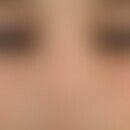Synonym(s)
DefinitionThis section has been translated automatically.
Substance (or mixture of substances) used in the manufacture of medicinal products or to support or regulate the action of medicinal products. An excipient, in the quantity contained in the finished product, has no direct pharmacological effect, unlike an active substance.
Pharmacodynamics (Effect)This section has been translated automatically.
Forming: excipients may carry the active substance and may significantly influence the form of the medicinal product
Control of active ingredient release: Excipients can significantly influence the release of an active ingredient (release from the base).
Stability improvement: Excipients (e.g. preservatives) can significantly influence the shelf life of a drug (Note: a description of the shelf life system, such as shelf life and expiration dates of formulations, is given in the NRF Looseleaf Collection).
Colour, odour, taste and physiological tolerance: Excipients can significantly influence drug properties such as colour (pigments), odour and tolerance.
Manufacturability: Excipients can influence certain production steps in the manufacture of medicinal products
According to Garbe and Reimann, the following excipients are relevant for dermatics:
- Lipid components (paraffin, vaseline, cetylstearyl alcohol, waxes, oils, etc.) as basic dermatological ingredients, e.g. as carrier substances and consistency agents
- Hydrophilic components and solubilisers (ethanol, isopropyl alcohol, propylene glycol, glycerol, macrogol, etc.)
- Emulsifiers and surfactants (cetyl alcohol, cetylstearyl alcohol, cholesterol, wool wax alcohols, wool wax, polysorbate, etc.)
- Pigments and powders (aluminium stearate, magnesium stearate, zinc stearate, iron oxides, lactose, corn starch, talcum, titanium dioxide, zinc oxide, white clay, etc.)
- Thickening agents (polyacrylic acid, hypromellose, collodion, gelatine, types of starch, etc.)
- PH regulators (sodium hydroxide, sodium acetate, sodium lactate, anhydrous citric acid, etc.)
- Preservatives (propylene glycol, benzyl alcohol, phenol, triclosan, benzoic acid, sorbic acid, polyhexanide etc.)
- Antioxidants (alpha-tocopherol, ascorbic acid, citric acid, salicylic acid and others)
You might also be interested in
Undesirable effectsThis section has been translated automatically.
Obsolete or problematic additives in dermatics (varies according to Garbe and Reimann).
- Aliphatic amines (nitrosamine formation)
- Benzoetincture (allergenicity)
- Benzene (carcinogenicity)
- Lead acetate e.g. in so-called lead plasters (toxicity)
- Boric acid (toxicity)
- Formaldehyde (allergenicity, toxicity)
- Mercury-containing externals e.g. in antiseptics (toxicity, environmental problem)
- Phenol (nephrotoxicity, medically justifiable exceptions: phenolic acuity at the nail fold; sclerotherapy of hemorrhoids)
- Talc (granuloma formation, danger of germination)
Note(s)This section has been translated automatically.
In all EU countries, finished medicinal products must be declared in the summary of product characteristics and package leaflet.
LiteratureThis section has been translated automatically.
- Ebel S et al.(1987): Lexicon of Pharmacy, Georg Thieme Verlag S 318
- Garbe C, Reimann H (2005) Dermatological formulations. Georg Thieme Publisher S 78-100
- Gujjar M et al (2014) Vehicle influence on permeation through intact and compromised skin. Int J Pharm 472(1-2):362-368.
- Lázaro C et al (2006) Foreign body post-varicella granulomas due to talc. J Eur Acad Dermatol Venereol 20:75-78.
- Low SE et al (2006)Talc induced pulmonary granulomatosis. J Clin Pathol 59:223.
- Prodi A et al (2016) Sensitization to formaldehydes in Northeastern Italy, 1996 to 2012. dermatitis 27:21-25.




